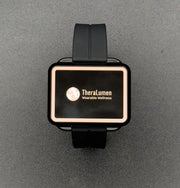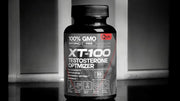Time is running out, our 10% OFF sale! Code: WELCOME10
May 30th, 2023
Unlocking the Potential of Flavonoids in the Battle Against Parkinson's Disease
Introduction
Explore the potential of flavonoids in managing Parkinson's disease. This blog article delves into recent research highlighting the neuroprotective properties of flavonoids, their role in reducing oxidative stress, and their potential in slowing Parkinson's progression. A great read for those interested in nutrition, health, and the latest developments in Parkinson's disease research.
"As we unravel the mysteries of Parkinson's disease, flavonoids emerge as a beacon of hope, with their potential to offer neuroprotection and combat oxidative stress, marking a promising pathway for future research."
Where the reasearch leads us
Parkinson's disease (PD) is a neurodegenerative disorder, the second most common one after Alzheimer's disease. Currently, over 10 million people are living with PD worldwide. It primarily affects movement, leading to tremors, stiffness, and balance issues, and as it progresses, it can result in cognitive changes and emotional problems. While there's no cure for PD yet, research is always ongoing, and a promising area of investigation is the role of flavonoids in preventing or alleviating the symptoms of PD.
What are Flavonoids?
Flavonoids are a group of plant metabolites thought to provide health benefits through cell signaling pathways and antioxidant effects. They are common in various fruits, vegetables, grains, bark, roots, stems, flowers, tea, and wine. They're divided into six subclasses: flavonols, flavones, isoflavones, flavanones, anthocyanidins, and flavanols. Research shows that these compounds might have neuroprotective effects.
Flavonoids and Parkinson's Disease
In a study titled "Neuroprotective Effects of the Natural Phenolic Compounds," published in Molecular Neurobiology in 2013, researchers aimed to further understand the neuroprotective effects of flavonoids on Parkinson's disease.
The study discovered that flavonoids can protect neurons by enhancing neuronal function, reducing inflammation, and promoting antioxidant activity. They also exhibit anti-amyloidogenic effects, which helps in reducing the buildup of harmful proteins in the brain, a phenomenon often linked to neurodegenerative disorders.
One key finding was the role of oxidative stress in PD. Oxidative stress refers to an imbalance between free radicals and antioxidants in the body, causing damage to fats, DNA, and proteins. This is especially harmful to neurons, leading to neurodegeneration and the symptoms of PD.
Flavonoids' antioxidant properties are crucial here. They can neutralize free radicals, reducing oxidative stress and potentially slowing the progression of PD. Furthermore, flavonoids can modulate cell signaling pathways and have anti-inflammatory effects, both of which might be helpful in managing PD.
This research doesn't mean that simply eating flavonoid-rich foods can prevent or cure PD. But it does provide a promising direction for future research. Scientists need to further investigate the mechanisms of action, ideal dosage, and potential side effects before flavonoids can become a part of standard PD treatment.
Conclusion
Although there's much we still don't understand about Parkinson's disease, it's clear that nutrition and lifestyle play an important role in managing it. The research mentioned above adds to a growing body of evidence suggesting that flavonoids might have a protective effect against PD. More studies are needed to establish their efficacy and safety, but the future looks promising.
In the meantime, it can't hurt to incorporate more flavonoid-rich foods into your diet. They're found in a wide range of fruits, vegetables, and other foods and are associated with a number of health benefits. As we wait for more conclusive research, a balanced, nutritious diet is still one of the best tools we have for maintaining overall health.
Note: Always consult your doctor or a registered dietitian before making any major changes to your diet, especially if you have a medical condition like Parkinson's disease. This article should not be used as a replacement for professional medical advice.
References
-
"Neuroprotective Effects of the Natural Phenolic Compounds" by Chen, Z et al., published in Molecular Neurobiology, 2013. (https://www.ncbi.nlm.nih.gov/pmc/articles/PMC3576896/)
-
"Flavonoids and Brain Health: Multiple Effects Underpinned by Common Mechanisms" by Spencer, JP, published in Genes & Nutrition, 2009. (https://www.ncbi.nlm.nih.gov/pmc/articles/PMC2775888/)
-
"Flavonoids: Antioxidants or Signalling Molecules?" by Pietta, P, published in Free Radical Biology and Medicine, 2000. (https://www.sciencedirect.com/science/article/abs/pii/S0891584900003456)
-
"Dietary Flavonoids and the Risk of Parkinson's Disease" by Gao, X et al., published in Neurology, 2012. (https://pubmed.ncbi.nlm.nih.gov/22491871/)
-
"Flavonoids as Therapeutics for Neurodegenerative Diseases" by Rasouli, H et al., published in Neurochemical Research, 2018. (https://link.springer.com/article/10.1007%2Fs11064-018-2520-6)
Written by Rob Shockey
Liposomal Methylene Blue is an alkalizing agent, which prevents inflammation and swelling. When combined with Red Light Therapy it enhances the function of the mitochondria by multiple factors, increasing the production of ATP. With more energy cells can function more efficiently, rejuvenate themselves (as in repairing damaged cells and removing nonfunctioning cells), and decrease inflammation.
- Reduces inflammation
- Fights viral loads and infectous cold/flu
- Promotes healthy bacterial levels
- Improves oxygen and ATP energy
- Enhances cellular repair
- Promotes Healthy-Looking Hair, Skin, and Nails*
- Contains Iodine - An Essential Nutrient*







